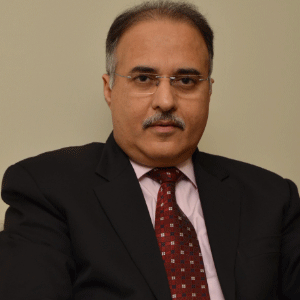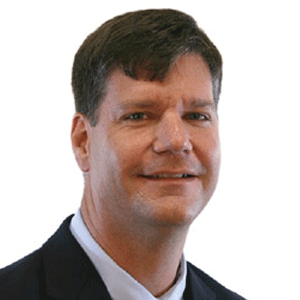THANK YOU FOR SUBSCRIBING

Smart Energy Solutions for Industries
Michael Turwitt, CEO & President, 2G Cenergy Power Systems Technologies


Michael Turwitt, CEO & President, 2G Cenergy Power Systems Technologies
The U.S. is entering a new age of power generation. The need to reduce our carbon footprint and overall impact on the environment has forced government and environmental agencies to “raise the bar”. These new standards and governmental regulations are requiring higher energy efficiencies and reduced carbon emissions, which are not achievable with traditional energy production methods.
An outdated power grid requires major investments and modernization which will, inevitably, increase energy cost for consumers. Natural disasters like hurricanes, tornados, and flash floods create several challenges for the supporting infrastructure of the power grid; this results in lowered reliability during emergency situations. In addition to the reliability issues, traditional power generation reaches only about 33 percent efficiency; most of the energy produced at each main power plant is lost during transmission through the grid before reaching end users.
It is no secret that Europe is about 20 years ahead of the United States when it comes to creating and utilizing efficient and renewable energy sources for industry, giving a foretaste of what is to come in the American market. Most recently, some of the largest European utilities announced a radical move to spin off their centralized fossil-fuel assets in order to focus exclusively on distributed energy, cogeneration, renewables, and more innovative customer-oriented solutions.
Utility companies throughout the United States currently enjoy low natural gas prices and face less aggressive renewable energy mandates. Nonetheless, the plummeting cost of solar , wind, and highly efficient CHP cogeneration technologies, which allow customers to control and moderate their electricity usage, are starting to transform the energy landscape.
Many corporations, manufacturers and facility owners in North America are ditching their old power suppliers, opting instead to utilize Combined Heat and Power (CHP) Systems, which are capable of delivering most of their facilities’ electrical needs while simultaneously satisfying all of their hot water and thermal energy requirements.
CHP integrate the production of usable heat and electrical power into one highly efficient process. By generating power at the point of
The number of CHP Cogeneration systems used throughout the country is rapidly increasing; and distributed energy capacity, represented by CHP systems, is reaching an important significance when it comes to grid integration. The U.S. government set a goal, which aims for the implementation of 40 gigawatts of new CHP systems in the U.S. by 2020, recommending this highly efficient and environmentally friendly technology as key for advanced energy production, making CHP a prominent contributor towards the entire energy generation mix.
In the past, CHP systems were most often only built to supply customers with power, independent of the grid. They were usually part of university and facility managers’ innovative approach to emergency power and were strictly used for power during grid outages.
Today, CHP systems are beginning to play a much more important and useful role as the foundations of microgrid systems, which offer continuous reliable power to utilities and grid operators, especially during natural disaster emergency situations. Almost all the large-scaled microgrid systems that kept running amidst grid outages during Hurricane Sandy were CHP systems. Due to these experienced unpredictable severities, New York and Connecticut, among several other states, are looking to invest millions of dollars to create more storm-resilient energy system involving microgrids.
According to the Department of Energy’s National Renewable Energy Laboratory, CHP Cogeneration systems can also be useful to mitigate the intermittency of solar and wind power, as compared to conventional large-scale generation. This is largely due CHP microgrids coming in bite-sized versus megawatt-scale increments, which do not experience power losses seen with transmission and distribution lines. Various utilities in the U.S. are already working on ways to integrate these grid-edge resources into their traditional grid capacity and reliability planning methods; countries like Germany and Japan are, arguably, even further ahead with this development.
One good example of CHP Cogeneration success is Simmonds International, a manufacturer of high quality saw blades in Fitchburg Massachusetts. With industrial electricity prices in Massachusetts as high as $0.20 per kW/h, the company decided to take an important step towards independence and energy cost savings. After extensive comparison and evaluation, a team of engineers decided to implement a Combined Heat and Power System from 2G CENERGY.
“Many corporations, manufacturers and facility owners in North America are ditching their old power suppliers, opting instead to utilize Combined Heat and Power (CHP) Systems”
This complex project, with energy needs of 1.6MW, was realized with the implementation of three modular cogeneration plants, each with a capacity of 600ekW. This configuration provides much more flexibility and reliability. Due to Simmonds choosing one of 2G CENERGY’s pre-engineered containerized solutions, the originally projected engineering costs of the project were cut by nearly 80 percent. Installation and commissioning of the system at the facility took only two weeks to complete.
Simmonds utilizes the heat to feed a large absorption chiller, which provides the facility with cooling during summer months and heating through the winter. In order to meet strict local air emission limits, three Selective Catalytic Reduction (SCR) systems with advanced active emissions control were integrated into the system; the result is an ultra-low emission system. Bottom line, Simmonds International, was able to significantly reduce their overall energy costs.
One thing is certain; CHP is on a roll and coming on-line at a rapid pace! CHP cogeneration is and will be an important part of the overall energy infrastructure.
Check This Out: Top Renewable Energy Solution Providers











